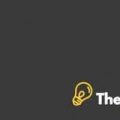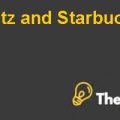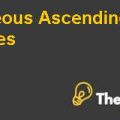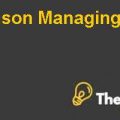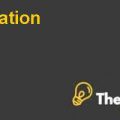Value Chain Analysis
The value chain analysis on the Infinity Bank is conducted in order to determine how the company can meet the profitability of its peer banks. It is analyzed that the major cost or expenditure of the Infinity Bank occurred due to the overhead cost of retail bank branches which was one of the largest network of branches in the United Kingdom.
The marketing department should focus on the selling activities of credit card and mortgages as these are the highest revenue generating products for the company. Moreover, the current account of the company was the loss making product for the Infinity Bank. Hence, the marketing department should focus on marketing activities related to the products so that the revenue can be increased as well from the current account product.
The operation activities of the Infinity Bank adopted the supermarket strategy which could increase the revenue through the retail bank branches resulting in further increase of the revenue as the supermarket strategy allowed the retail bank branches to enhance their profitability through the selling of the financial product. Hence, this strategy disabled the Infinity banks to increase the profitability in comparison with the banks prevailing in the United Kingdom. Hence, the activities performed by the Infinity Banks should be reconsidered in order to increase the profitability.
Recommendation
The cost structure analysis and value chain analysis of the Infinity bank provided the information that the Infinity bank adopted the supermarket strategy to enhance the efficiency and effectiveness of the retail bank branches in order to generate the revenue so that the current account revenue could be greater than the costs related to current account which led the company to under perform in comparison to their peer banks.
Instead of adopting the supermarket strategy, the company should adopt the cost saving strategy which will assist the company in reducing overhead cost and efficiently managing the operations, which will result in reduction of the overall cost of Infinity Bank. The strategy that should be adopted by the is to adopt the technological and infrastructural change which the other banks have adopted in order to cope up with the increasing challenges of deregulation which led the foreign competition to enter in the market and threat of new entrants increased of the Infinity Bank. Therefore, Infinity Bank should focus on its operating and marketing strategies after implementing technological and infrastructural change with the reduction in number of branches operated by the bank as technology advancement has reduced the need of largest branches network for banks.
Appendix
Exhibit 1
| P&L: 1999-2003 | |||||
| 1999 | 2000 | 2001 | 2002 | 2003 | |
| Current accounts | |||||
| no. of accounts (millions) | 8.10 | 8.19 | 8.32 | 8.41 | 8.60 |
| balances on deposit (₤ millions) | 11,259 | 11,310 | 11,265 | 10,849 | 11,896 |
| Revenue (₤ millions) | |||||
| Net interest | 405 | 380 | 350 | 331 | 358 |
| Fees | 99 | 94 | 100 | 85 | 67 |
| Costs (₤ millions) | |||||
| Service costs | 650 | 674 | 707 | 701 | 716 |
| Overhead | 182 | 178 | 211 | 171 | 172 |
| Profit before tax (₤ millions) | -328 | -378 | -467 | -456 | -463 |
| Credit card accounts | |||||
| no. of accounts (millions) | 4.80 | 4.87 | 4.98 | 5.00 | 5.06 |
| balances borrowed (₤ millions) | 3,864 | 3,954 | 4,089 | 4,115 | 4,301 |
| Revenue (₤ millions) | |||||
| Net interest | 465 | 455 | 446 | 424 | 434 |
| Fees | 194 | 206 | 233 | 222 | 219 |
| Costs (₤ millions) | |||||
| Service costs | 108 | 109 | 104 | 98 | 91 |
| Credit losses | 124 | 111 | 129 | 125 | 129 |
| Overhead | 58 | 53 | 50 | 50 | 51 |
| Profit before tax (₤ millions) | 369 | 388 | 396 | 373 | 383 |
| 79% | 85% | 89% | 88% | 88% | |
| Mortgages | |||||
| no. of accounts (millions) | 0.82 | 0.84 | 0.87 | 0.84 | 0.86 |
| balances borrowed (₤ millions) | 33,090 | 35,269 | 37,226 | 36,111 | 37,266 |
| Revenue (₤ millions) | |||||
| Net interest | 328 | 342 | 372 | 341 | 335 |
| Fees | 21 | 20 | 20 | 19 | 19 |
| Costs (₤ millions) | |||||
| Service costs | 12 | 12 | 13 | 12 | 10 |
| Credit losses | 40 | 32 | 41 | 37 | 38 |
| Overhead | 9 | 9 | 9 | 9 | 9 |
| Setup costs | 44 | 44 | 45 | 41 | 41 |
| Profit before tax (₤ millions) | 243 | 266 | 284 | 261 | 257 |
| 74% | 78% | 76% | 76% | 77% | |
| TOTAL PROFIT FOR 3 MAIN PRODUCTS (₤ millions) | 285 | 276 | 213 | 178 | 177 |
| 24% | 23% | 18% | 16% | 16% |
This is just a sample partical work. Please place the order on the website to get your own originally done case solution.

